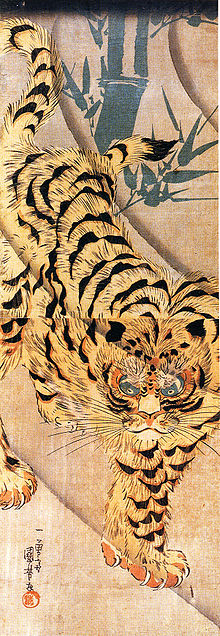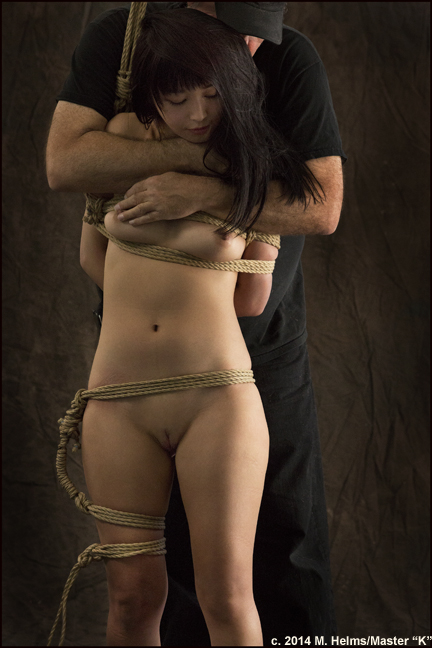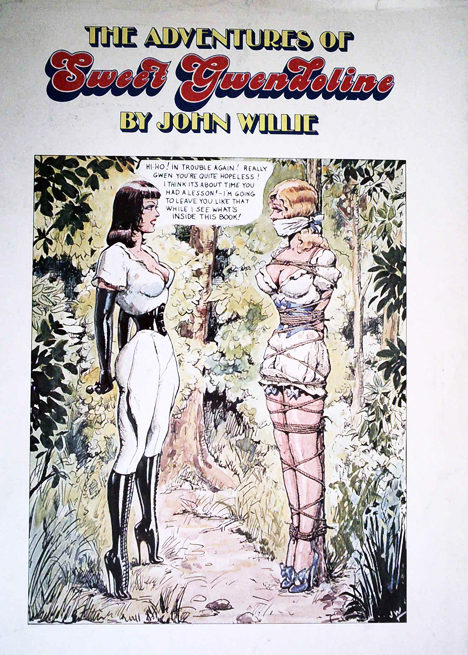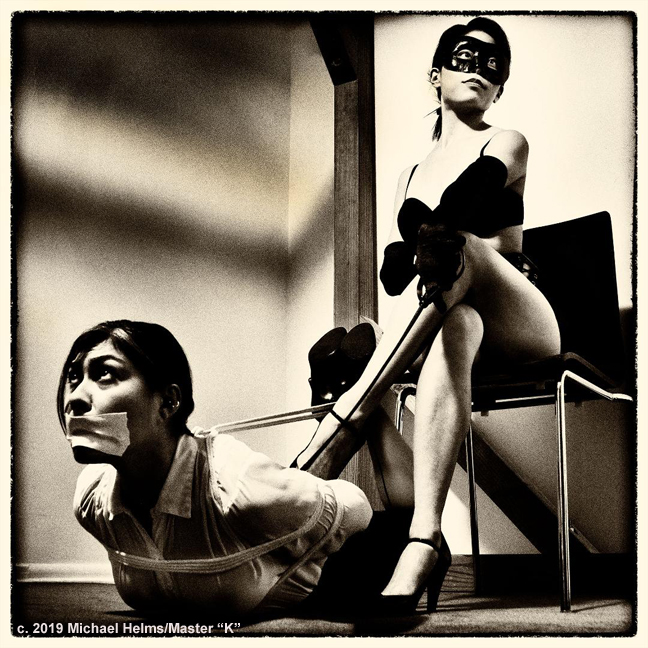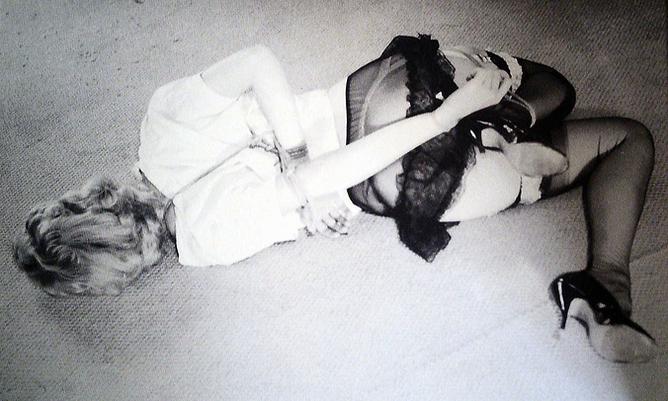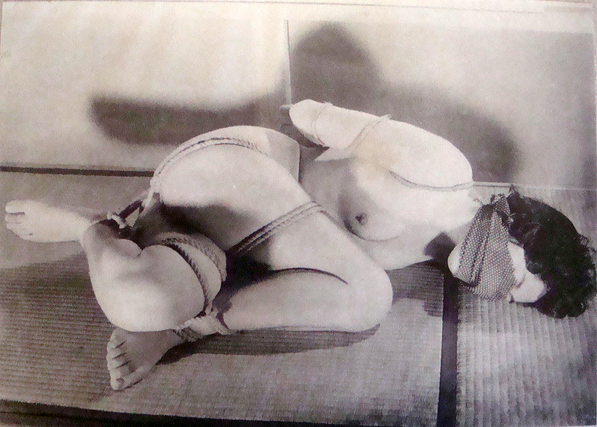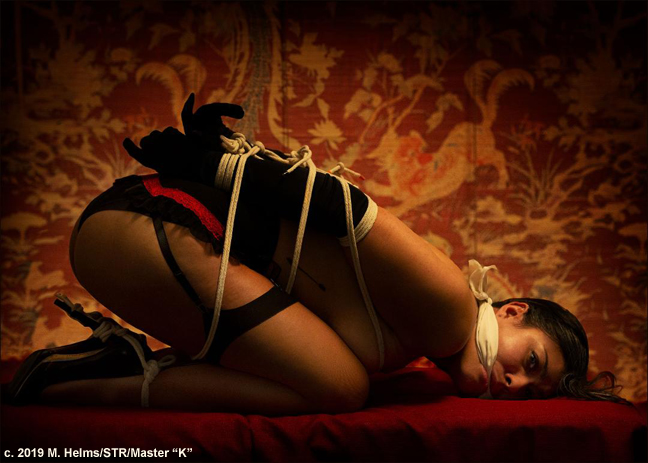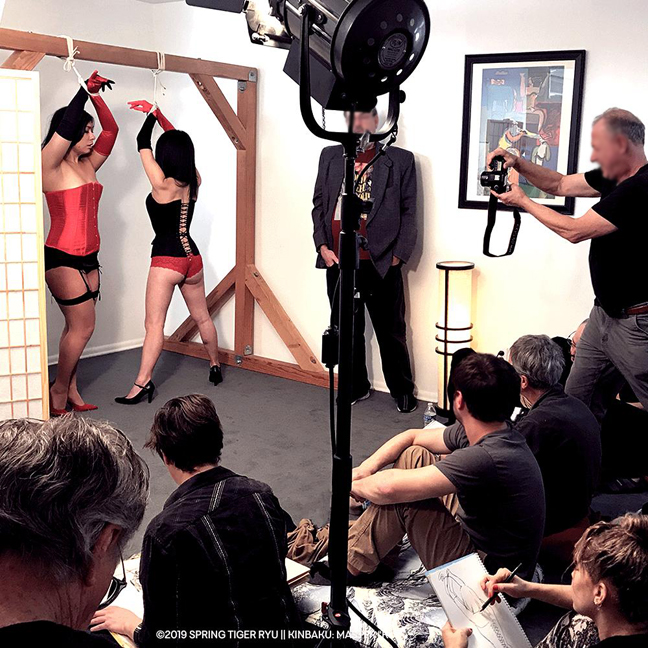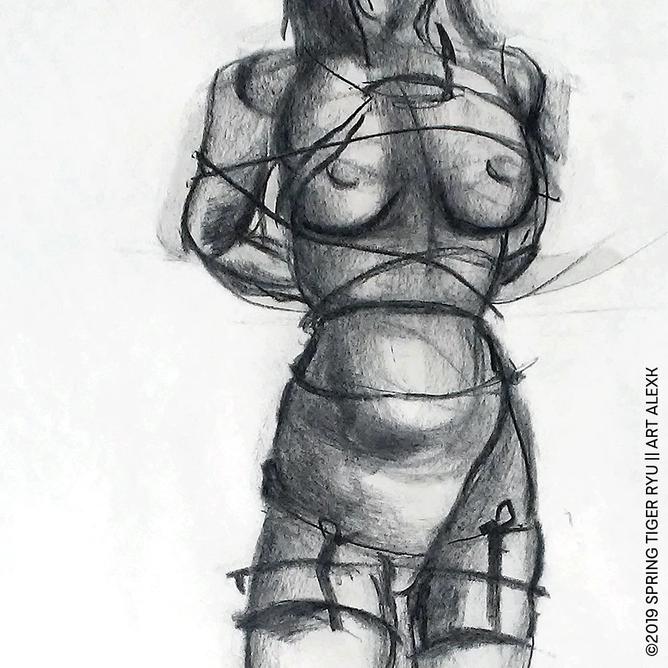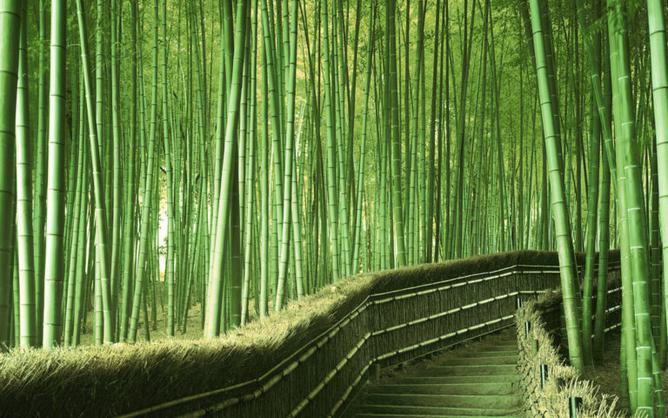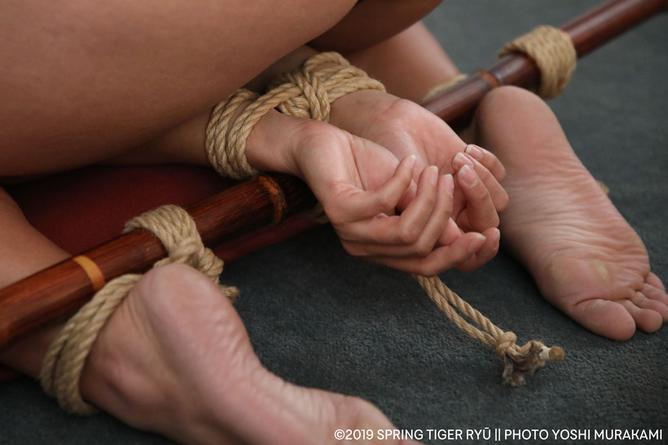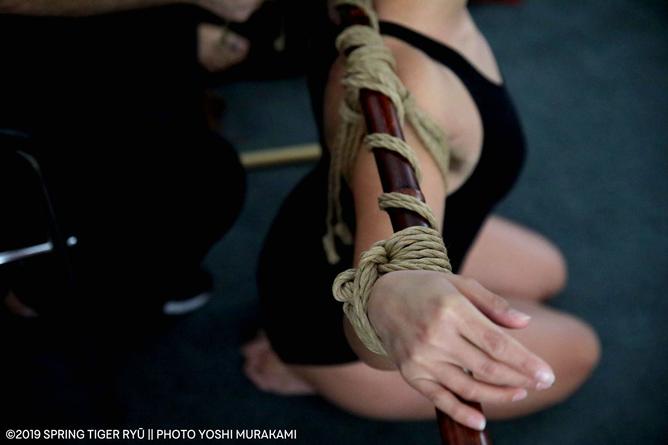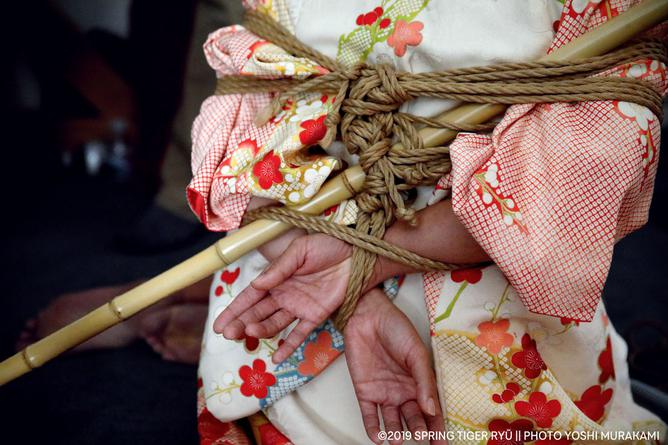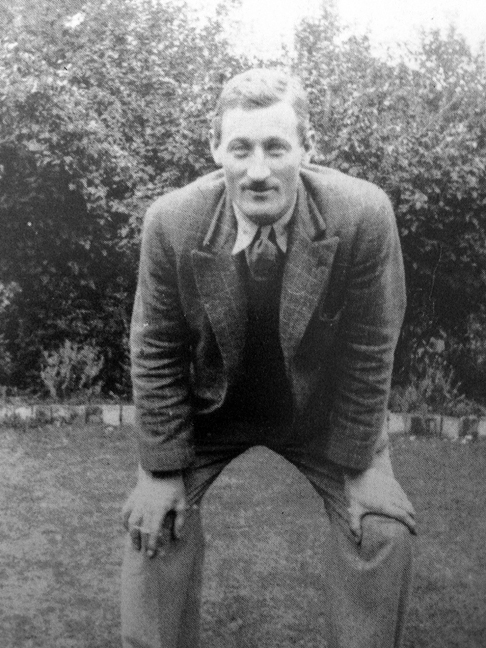Or everything you always wanted to know about Japanese erotic bondage when you suddenly realized that you didn't speak Japanese
The Beauty of Kinbaku
Kinbaku
and Art
Please note: no part of these articles may be reproduced by any means without the express written consent of the author or the publisher, King Cat Ink.
This page is best viewed on Google Chrome.
Behind the scenes still of the 3 story suspension - 4 - take off.
Or everything you always wanted to know about Japanese erotic bondage when you suddenly realized that you didn't speak Japanese
The Beauty of Kinbaku
Kinbaku
and Art
Please note: no part of these articles may be reproduced by any means without the express written consent of the author or the publisher, King Cat Ink.
Chapter Eighteen
Kinbaku and Art-American Bakushi Part 12 -
Two Exciting Presentations
by Master “ K”
This page is best viewed on Google Chrome.
Please join us next time as we continue our exploration into the fascinating subject of “Kinbaku and Art!”
The first was inspired by a good friend and long-time participant in our semi-annual photography events who wondered if we could offer a “fetish costume” themed program. It seemed like an excellent idea, especially since it so perfectly dove-tailed with an idea we had long wanted to explore--an afternoon celebrating the art and skill of legendary Western rope master, publisher and artist John Willie (creator of the legendary “Sweet Gwendolyn” bondage cartoon; newly re-printed in a wonderful edition published by Belier Press) and his links to Japanese Kinbaku.
That said, quite often throughout the year private instruction will give way to group events that focus on the fascinating history of Kinbaku as well as on specialized techniques that folks who have a sophisticated interest in rope play want to know more about.
Behind the scenes still of the 3 story suspension - 4 - take off.
This was a fascinating topic I first came across when researching my book, “The Beauty of Kinbaku” and I always thought it would make for an interesting stand-alone presentation. Thanks to our friend’s suggestion, the timing seemed right to do a lecture/art event on dear old JW, replete with corsets, long gloves, high heels and beautiful models.
Since the last several posts in this series on Kinbaku and Art have focused on media related events (art gallery openings, film and book cover creation, etc.) I thought it was high time to shift gears and do a post on the mainstay of our activities in Los Angeles, education.
Event announcements: Master "K" Presents John Willie and Kinbaku & Bamboo.
As anyone who knows anything about the history of Western fetish knows, John Willie (real name, John Alexander Scott Coutts) is generally considered the father of Western rope bondage and its greatest early practitioner. What few people realize is that, due to an extraordinary set of circumstances, a fair bit of his inspiration came from Japan!
Our goal for the event was to re-create a number of John Willie’s more famous compositions as well as to explain some of the techniques he attempted to adapt from Japanese Kinbaku. He was a brilliant rope master but it’s not always easy to re-engineer from photos patterns as complex as those found in authentic Kinbaku. However, he got close on many occasions and even duplicated some of the more esoteric and complicated ties as depicted in postwar Japanese magazines.
The second recent event was of a completely different nature being the latest edition in our long running series of “mod classes” or modular classes devoted to exploring specific, somewhat unusual subjects related to Japanese rope bondage. This is a series we’ve done for years and one for which we have always had a very enthusiastic response. Past topics have Included “Wax and Rope,” “Gags and Blindfolds” and “Predicament Ties,” among many others.
Such was the case recently when, in conjunction with Spring Tiger Ryu, an organization which I co-founded with my good friend and student Zelement, two different types of programs were offered to sold out audiences.
In our Beverly Hills dojo it’s been my pleasure over the years to teach the techniques of Kinbaku to many private students and small groups. These classes are held in the traditional Japanese manner and always focus on the key principles of beauty, safety and pleasure. This is so because it’s been my experience that only one on one teaching provides the best result since everyone’s interests and skills are a little different and it’s only with a close, hands-on approach that a sensei (teacher) can be sure that a student is truly able to understand and safely execute the beautiful patterns of Kinbaku with and for a willing partner.
The importance of after-care.
While I had the privilege of presenting the lecture/demonstrations, neither of these events could have been done without the brilliant ideas and organization of Zelement, the expert production assistance of longtime friends and students Remy and Motley and the beauty and grace of our two lovely models, Marissa Lynn and Reneé. My thanks to them all and to the wonderful audiences for helping to make both events such rewarding and satisfying experiences.
Without giving away too many details from “The Beauty of Kinbaku,” Willie, despite hating the Japanese as an enemy in World War II, picked up a lot of their tying techniques through exposure to early Japanese “rope books” and began to use them when he started producing content for his mail order photo business here in Los Angeles. The rest is, as they say, history as JW proved to be one of, if not the, most influential of mid-twentieth century rope artists, both in North America and in many other parts of the world.
In Japan the combination of bamboo and rope is a time-honored tradition and many traditionalist practitioners refuse to incorporate any other materials into their play. Of course, in modern times such intriguing add-ons to rope sessions include wax for stimulation and pleasure and carabiners for suspension safety, among many other materials and techniques.
The topic for this event was “Rope and Bamboo” and once again we had a lot of fun with an enthusiastic audience.
Our presentation was devoted to how to use bamboo creatively and safely and this meant how to tie your partner using bamboo, what poses were both attractive and stimulating and what not to do in order to avoid injury. We were even able to give all of our participating couples their own lengths of bamboo to work with during class!
John Willie inspired by legendary Japanese bondage master Minomura Kou circa 1952.
Top: John Willie imitates the master circa 1960.
Bottom: The green caterpillar tie circa 1952.
Master & Slave--a classic portrait from the fabulously talented Michael Helms.
Bamboo version of the classic "momo shibari."
Artist's sketch from the John Willie event.
The original and some wonderful art from one of our gifted attendees.
A recreation of the famous "Sweet Gwendoline Ball Tie."
"The Adventures of Sweet Gwendoline" by John Willie, Belier Press edition, 1974.
Kinbaku & Bamboo--hojojutsu inspired prisoner tie.
That's a wrap! Yes, the actors were really tied as these rope marks attest.
Kinbaku & Bamboo--two poles used with the "gote."
Where all the toys come from!
Kinbaku & Bamboo--the "water carrier" pose.
Another "Sweet Gwendoline" tied to an upright pole, or hashira as it is known in Japan.
Bamboo & bound arms and hands.
John Alexander Scott Coutts, aka John Willie; England, circa the 1930's.
A demonstration of the classic John Wille themes of bondage and fetish wear--corsets and high heels.
Kinbaku & Bamboo--the "water carrier" pose.
Links to Other Chapters of Kinbaku and Art
